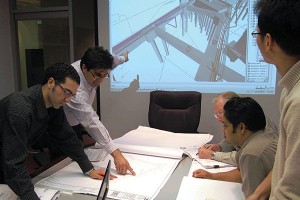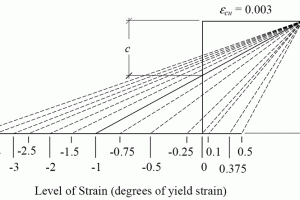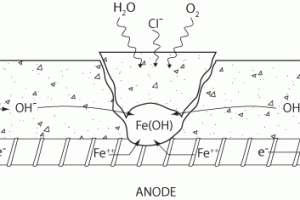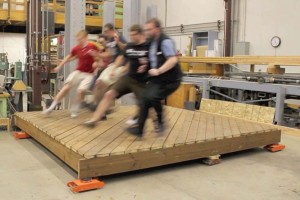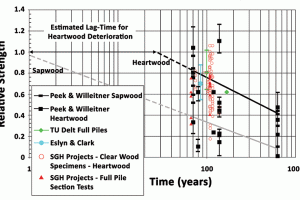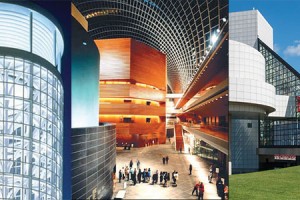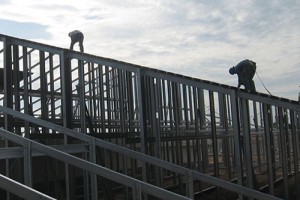Support for structural licensure led NCSEA, SECB, ASCE-SEI and ACEC’s CASE to form the Structural Engineering Licensure Coalition (SELC). While SELC serves to provide a common voice in support of structural licensure, there are engineers and organizations that oppose structural licensure. This article examines the reasons for such opposition. …
Review Category : Articles
KSi/Structural Engineers was an Award Winner for the McCamish Pavilion project in the 2013 NCSEA Annual Excellence in Structural Engineering awards program (Category – Forensic/Renovation/Retrofit/Rehabilitation Structures). …
Often a summary refresher helps keep us grounded in the fundamentals of elements that we commonly design. Owing to many requests from peers, this article is provided as a summary of the steps that may be taken for the development of a typical reinforced concrete column interaction diagram. …
I have previously (and repeatedly) cited a paper by philosophers Allison Ross and Nafsika Athanassoulis that highlights the risk-taking nature of engineering practice and draws out some of the associated ethical implications. In two additional papers (“A Virtue Ethical Account of Making Decisions About Risk,” Journal of Risk Research, Vol. 13, No. 2, March 2010, pp. 217-230; “Risk and Virtue Ethics,” chapter 33 in Handbook of Risk Theory, Springer, 2012), the same authors discuss risk in a more general sense and argue convincingly that virtue ethics provides the most adequate approach for dealing with it. …
As a part of Pennoni’s on-call contract with an existing client, the Philadelphia structural division investigated and developed repair bid documents for an existing, three-level, 1,200-space precast concrete parking garage during the last quarter of 2012. Part 1 of this series (September 2013) described the existing structure and summarized Pennoni’s observations and material testing results. Part 2 (November 2013) presented an analysis of those findings. This article conveys Pennoni’s conclusions regarding the feasibility of repairing the garage in order to extend its service life. …
The safety of exterior elevated decks, balconies and porches is an important national issue due to numerous documented structural collapses that have resulted in serious injuries and, in some cases, deaths (Shutt 2011; Legacy Services 2010). The problem is not confined to residential construction, as decks are also popular in commercial structures. Due to larger occupancies, the stakes are even higher in commercial construction as evidenced by deck collapses in Polson, MT casino with 52 injured in 2004 and a Miami, FL sports bar with 24 injured in 2013. Engineered design has been hampered by knowledge gaps on structural loads – especially lateral loads. This information is vital for registered design professionals to create safe and efficient engineered designs for decks, porches and balconies. …
As discussed previously in Untreated Submerged Timber Pile Foundations – Part 1 (STRUCTURE® magazine, December 2013), deterioration of pile tops exposed above groundwater levels is a well-known problem. It is less known that submerged portions of timber piles can also deteriorate with time, albeit at a slower rate, due to bacterial attack. This may become critical when considering underpinning methods aimed at extending service life of structures supported on timber piles. …
ASTM A500 has been the preferred material specification in the United States for cold formed, welded carbon steel hollow structural sections (HSS) since the late 1970s. In April of 2013, a new material specification, ASTM A1085, was released for steel tubes used in structural applications. …
Structural Forum is intended to stimulate thoughtful dialogue and debate among structural engineers and other participants in the design and construction process. Any opinions expressed in Structural Forum are those of the author(s) and do not necessarily reflect the views of NCSEA, CASE, SEI, C3Ink, or the STRUCTURE® magazine Editorial Board.
I read eagerly the Structural Forum column in the July 2013 issue, Increasing the Velocity of Knowledge, by Gene Frodsham, MS, S.E. As a professional educator and professional engineer, I hoped that he had insights that I could use. I am constantly faced with clientele that ask me to teach them the same material faster – always faster. …
On a recent chemical plant project for which the author was the Engineer of Record, an electrical contractor, contrary to contract specifications, manually arc welded electrical grounding conductors to reinforcing steel for a pipe rack foundation. The electrician explained that the National Electric Code (NEC) allows welding to concrete encased reinforcing steel, and he frequently does so in lieu of independent electrical ground rods which were specified on this project. …

